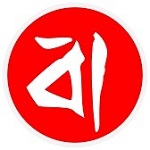Amnesty International report confirms police used excessive force against protesters, citing witness accounts and visual evidence

Bangladeshi authorities used unlawful force against student protesters and failed to ensure their protection during the ongoing ‘Bangla-Blockade’ quota-reform protest across the country, said Amnesty International today.
Witness testimonies, video and photographic evidence analysed and authenticated by Amnesty International and its Crisis Evidence Lab confirm the use of unlawful force by the police against student protesters.
Further witness testimonies confirm the continuation of a multi-year pattern of violence against protesters, allegedly committed by members of the Bangladesh Chatra League (BCL), a group affiliated with the ruling party.
“Amnesty International strongly condemns the killing of student Abu Sayed and the attacks against quota reform protesters at Dhaka University and other campuses across the country,” said Taqbir Huda, Regional Researcher for South Asia at Amnesty International.
“Bangladeshi authorities must fully respect people’s right to freedom of peaceful assembly in line with its commitments under international law and its own Constitution and protect peaceful protesters from further harm.”
At least six people have been killed and
thousands injured in the last two days across Bangladesh.
“Bashed heads, broken hands and
fractured legs”
Eyewitnesses that Amnesty International spoke with said that the protests were entirely peaceful before individuals from the BCL started attacking them on 15 July.
They claimed to have identified BCL members coming out of multiple residential halls in Dhaka University, particularly the Surja Sen and Bijoy Ekattor halls, armed with rods, sticks, and clubs with a few even brandishing revolvers.
The description of the violence against protesters is consistent with that previously documented by Amnesty International in 2023.
Amit*, a protester who came under attack in the Dhaka University campus, said: “We had nothing in our hands – we only had placards and flags ... They started throwing bricks at us and then with iron rods ... They did not discriminate between man or woman. They kicked the women in their breasts, in their stomachs, and on their heads.”
Amnesty International has verified videos of students being attacked on the streets and inside hospitals which corroborate the witness accounts.
“The State launched the Chatra League against us.”
A video verified by Amnesty International shows men waving their weapons while attempting to enter the Dhaka Medical College Hospital (DMCH) on 15 July.
Rima*, a master’s student at Dhaka University was one of the protesters who came under a second round of attacks at the DMCH where they were seeking treatment for their injuries.
She said: “The police were there in the hospital – [yet] the BCL came into emergency department and started attacking us again ... The State launched the Chatra League against us … every time we rise up, be it the protests of 2018 or 2023 – it is used as a force to crush us.”
“As a student of Dhaka University, I expected my university’s proctorial authority to ensure my safety. We were in front of the registrar building [and] I saw some of the university officials watching from above … we were trying to escape [but] the office buildings were locked up. We pleaded to be let in, but no one opened the doors. It is not just failure; this is complicity in BCL’s violence.”
“His white shirt had become completely drenched in blood”
Witnesses shared that a 22-year-old first-year student at Dhaka University was found lying on the street while “vomiting incessantly and struggling to breathe.” His white shirt had become completely drenched in blood.
The witness said: “We recovered his phone from his pocket which was completely smashed into pieces. Imagine the kind of force it needs to break a phone into pieces while its inside someone’s pocket.”
Abu Sayed, a 25-year-old student, was killed in the north-western city of Rangpur. In two videos verified by Amnesty International, at least two police officers discharge 12-gauge shotguns directly towards him from across the street. Sayed clutches his chest on impact as officers fire at least two more times.
Amnesty International used satellite imagery to geolocate the positions of Sayed and the police officers and found that they were at a distance of about 15 metres during the shooting.
Also, Sayed posed no apparent physical threat to the police. Sayed’s death certificate states he was ‘brought dead’ to the hospital.
Derrick Pounder, an independent forensic pathologist who examined photos of the wounds to Sayed’s chest, told Amnesty International, that the wounds are consistent with birdshot.
“This was a reckless, unprovoked attack on an individual posing no threat to police officers, using ammunition designed for hunting which is extremely dangerous and unlawful for use in the policing of protests.” said Taqbir Huda.
Amnesty International considers the use of birdshot to be absolutely inappropriate and it should never be used in the policing of protest.
Shotgun fired cartridges containing metal pellets (including birdshot or buckshot designed for hunting) can penetrate the skin causing serious injury. Their use has been associated with deaths and multiple cases of blinding in Egypt, India, and Iran.
“We urgently call on the Government of Bangladesh to rehabilitate all those injured and ensure they receive proper medical treatment. The authorities must also ensure that all those engaged in the attacks on peaceful protesters are held to account, and that an impartial, independent, and swift investigation is conducted against these attackers as well as the police officers who have directly perpetrated or failed to prevent such breaches of the law.” said Taqbir Huda
____
*Names changed to protect identity

